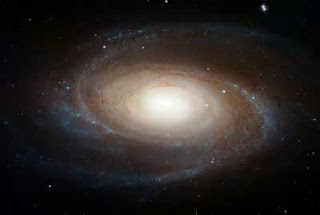Astronomy

- The Large Magellanic Cloud
Large Magellanic Cloud [LMC] is the third nearest galaxy to the Milky Way at a distance of 163,000 light-years. It has a diameter of about 14,000 light years and a mass of approximately 10 billion Suns, making it roughly 1/100 as massive as...
- 10 Satellites Of Milky Way Galaxy
10 Satellites Of Milky way Galaxy 1. Canis Major Dwarf ...
- Elliptical Galaxy
Elliptical Galaxy ...
- Types Of Galaxy
Spiral Galaxy ...
- Astronomy Quiz
Do You Know? 1. What is the brightest star in the night sky at any time? ...
Astronomy
Milky Way
Milky Way Facts

- It?s warped.
- It has over 200 billion stars
- It?s really dusty and gassy.
- It?s made up of other galaxies.
- There is a black hole at the center.
- It?s almost as old as the Universe itself.
The most current estimate for the age of the Universe is about 13.7 billion years. Our Milky Way has been around for about 13.6 billion of those years, give or take 800 million years. The oldest stars in our the Milky Way are found in globular clusters, and the age of the galaxy is determined by taking the age of these stars, and then extrapolating the age of what preceded them. Though some of the constituents of the Milky Way have been around for a long time, the disk and bulge themselves didn?t form until about 10-12 billion years ago, and the bulge may have formed earlier than the rest of the galaxy.
- The Large Magellanic Cloud
Large Magellanic Cloud [LMC] is the third nearest galaxy to the Milky Way at a distance of 163,000 light-years. It has a diameter of about 14,000 light years and a mass of approximately 10 billion Suns, making it roughly 1/100 as massive as...
- 10 Satellites Of Milky Way Galaxy
10 Satellites Of Milky way Galaxy 1. Canis Major Dwarf ...
- Elliptical Galaxy
Elliptical Galaxy ...
- Types Of Galaxy
Spiral Galaxy ...
- Astronomy Quiz
Do You Know? 1. What is the brightest star in the night sky at any time? ...
